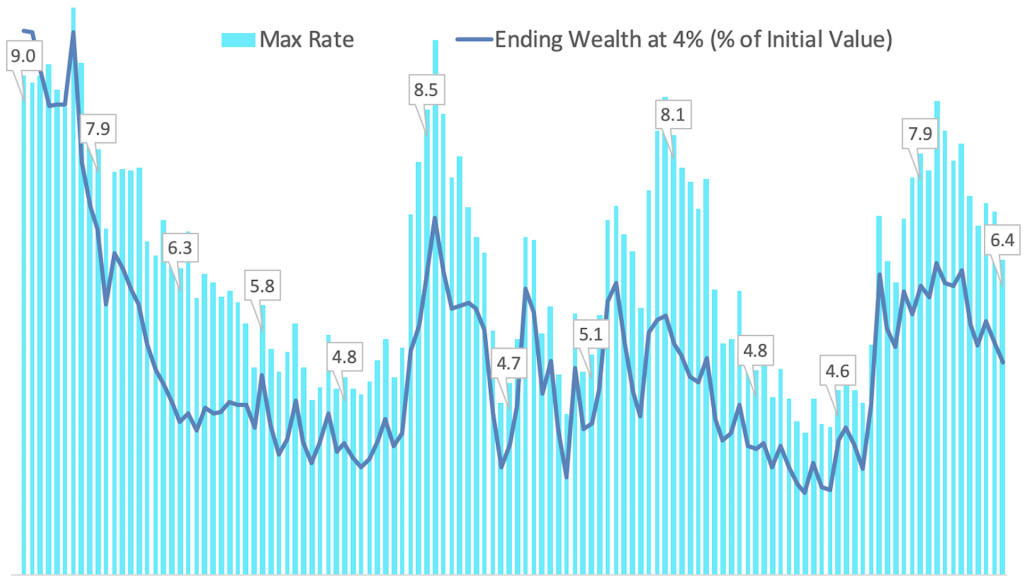How does planning for long term care rank on your list of priorities and to dos? If it is a high priority item, how much planning have you done around it? Maybe you are one of the few who is all set, but for most of us, the reality is that having a discussion or doing some planning about long term care is one of the hardest things to get started. Long term care is not medical care, but rather assistance with the basic personal tasks of everyday life. As is the case for disability insurance, most of us are in denial and think we won’t need long term care. Even accepting that it may be a fact of life at some point, it isn’t a topic we are very comfortable contemplating. So many people find out the hard way that they need a LTC plan, either because they are affected directly or a loved one is.
Planning for long term care is a process and the right choice depends on many considerations, so it’s important to make LTC part of your ongoing financial plan starting around age 50. If you are past that, the second best time is now. Here is some information to get you started.
Some statistics
According to the Health and Human Services department, about 70% of people aged 65% and older will need some form of LTC at some point in their life. The national average cost of LTC ranges between $51,480 for in-home homemaker services to $102,200 for a private room in a nursing home facility, per year, according to the Cost of Care Survey by Genworth. Research shows that in most cases the need for LTC may last 2 years or less. However, a nontrivial percentage may need LTC for 5 years or longer. Many people wrongly assume that Medicare or Medicaid will cover LTC expenses. The reality is that most people will be responsible for LTC for assistance with daily living activities, as discussed below.
What do the stats mean?
The stats don’t mean you will necessarily need LTC or LTC insurance. However, the high likelihood and the high potential costs make LTC a potentially large financial commitment that may derail your estate or retirement plans, and so it is important to consider LTC within a sound financial plan. This means that at the very least you need to understand the costs and benefits of different choices and have a strategy for LTC within your financial plan.
It’s a Family Plan
The first thing to realize is that planning for LTC is not just about you. Having an LTC plan helps you consider your own needs as much as your family’s when and if the time comes. As opposed to not having a plan, which can mean financial and personal burden on your loved ones. Some questions you need to consider are: Will you be able to receive LTC at home or will you need a nursing facility? Where are you going to live? Costs vary by location. Will your children and loved ones help with your LTC needs? Traditionally, families provided care for the elderly, but may no longer be willing or able to provide it in current times.
Here are the top reasons why people plan for LTC, according to LLIS.
- They’re concerned about living longer and becoming a burden on their family;
- They want the freedom to choose the quality and type of care they receive;
- They want to protect their spouse’s/loved ones’ quality of life and future;
- They want to be able to afford good care.
A good LTC plan is coordinated with your estate plan. Make sure your estate plan includes appropriate documents and discuss them with your family. That includes your will, a health care power of attorney, and a living will, or advanced care directive.
Costs
The common theme about LTC costs is that they are high, as shown in the national estimates above. However, costs vary by individual needs, circumstances, and geography. HHS has a breakdown by type of service, and Genworth has a calculator to help you estimate the cost in your area.
Options
LTC is a key risk to your retirement plan: there is a nontrivial likelihood that you will need a relatively large cash outlay in the future. One way to plan, particularly if you are pre-retirement is to assume that you will have to pay for about 2 years of about $51,540, the national average number, or use the cost sources above to adjust to your situation. This will help you estimate how much you may need to set aside to fund LTC.
Using this approach as a starting point can help you see the potential impact to your overall financial plan, and can help you decide whether you want to self insure, purchase LTC insurance, or other potential funding strategies. Here are some considerations for funding strategies.
LTC Insurance
Given the statistics about LTC, it is much more likely you will file a claim for LTC than you are to file one for auto insurance or home insurance after age 65. As the name implies, LTC insurance policies reimburse policyholders a daily amount (up to a preselected limit) for services to assist them with activities of daily living. The premium of the insurance policy depends on the chosen daily limit, the likelihood that you will need it and the duration, and how old you are. The younger you are the lower the premium because the expected cost is spread over a greater number of years. Other factors affecting costs are health conditions, the maximum number of days the policy will cover (benefit period), how quickly you want the policy to start making payments (the elimination period), and any additional benefits you choose, like inflation adjustments. Payments from LTC insurance are tax-exempt up to IRS limits that are set each year.
Most people shop for LTC insurance between the ages 52 and 64, according to the American Association of Long Term Care Insurance (AALTCI), with an average age of 57. It’s generally advisable not to wait too long as you may develop some health issues later in life that may substantially increase the cost of LTC insurance. If you purchase insurance, you may want to stick with simple LTC policies instead of combined life and LTC policies, as it will make fees and costs more transparent. Whether it ultimately saves you money or not, purchasing LTC insurance is a big piece-of-mind component of your financial plan. Some employer benefit plans offer LTC, so check if you do have coverage at work and how much the coverage is. It’s great if you do but you may still need additional coverage.
Health Savings Accounts
Distributions from health savings accounts can be used tax-exempt to pay for LTC premiums, up to some limits that depend on age. If you are between the ages of 51 and 60 included, the tax exemption limit for LTC insurance premiums is $1,580. If you are between the ages of 61 and 70, it is $4,220, and if you are 71 or over the limit is $5,270 according to the IRS. These limits are adjusted for inflation every year. So the ability to help you pay for LTC in a tax-free way is another good reason to use the HSA as a retirement planning vehicle.
Self insurance
Self-insurance can be an option for people with large accumulated assets or can rely on family for LTC. Once you understand the costs that are likely to apply to you in case you need LTC, you can save for it. If you don’t use it, your estate has additional potential assets. Keep in mind that if you decide to self insure, you should plan for greater costs than the average costs mentioned above. The question to ask is, what is the impact of a worst-case scenario on my financial plan? Do you have sufficient assets to handle the impact? Can you rely on children or other help to help you lower the costs?
Besides the cost differential relative to insurance, which can be estimated under a set of assumptions, the decision will also depend on personal considerations, including health history, the existence of known family conditions, whether you can rely on family for LTC, the history of family longevity, and many other factors. Check out some additional information from the HHS, and take a look at this checklist. Whether you should self insure or buy insurance is a highly personal question and one where you could benefit from talking with a trusted advisor.
Other sources
If you can’t buy LTC insurance for some reason, then you are basically self-insuring. However, there are some resources that you should be aware of that can help you self-insure. Medicare covers necessary medical care in hospitals or doctor offices, and services that help with medical conditions, like physical therapy and rehabilitation. But it does not cover assistance with daily living activities. Medicaid does have an LTC assistance program. However, it applies in cases of very low income and assets, with benefits and eligibility varying by states. If you are not eligible based on assets, you have to use your assets until you reach eligibility, not a great financial planning outcome. Nearly every state currently has a partner program with insurance companies that will help you shelter up to $150,000 from the required asset use by Medicaid. So you may consider such a plan.
Deciding the appropriate need and funding sources for long term care is a very personal financial planning question. What works for your friends and neighbors is unlikely to work for you. It is also a crucial financial planning question. Getting it right depends on a number of personal factors that likely change over time. It is important to get started thinking about LTC and make it part of a plan as early as possible, generally around age 50. Speak to a trusted financial planner about LTC in your retirement plan.
Until Next Time!
Massi De Santis is an Austin, TX fee-only financial planner and founder of DESMO Wealth Advisors, LLC. DESMO Wealth Advisors, LLC provides objective financial planning and investment management to help clients organize, grow, and protect their resources throughout their lives. As a fee-only, fiduciary, and independent financial advisor, Massi De Santis is never paid a commission of any kind, and has a legal obligation to provide unbiased and trustworthy financial advice.


